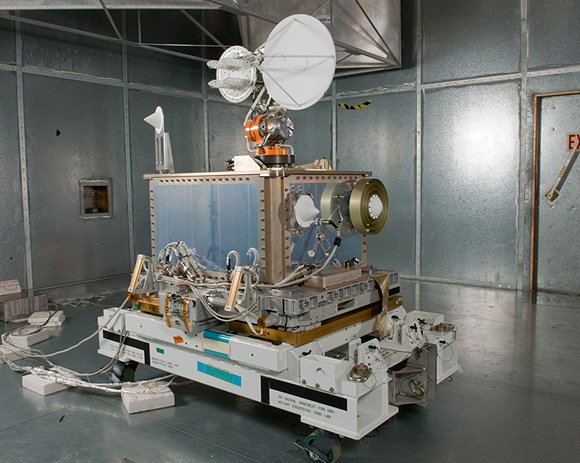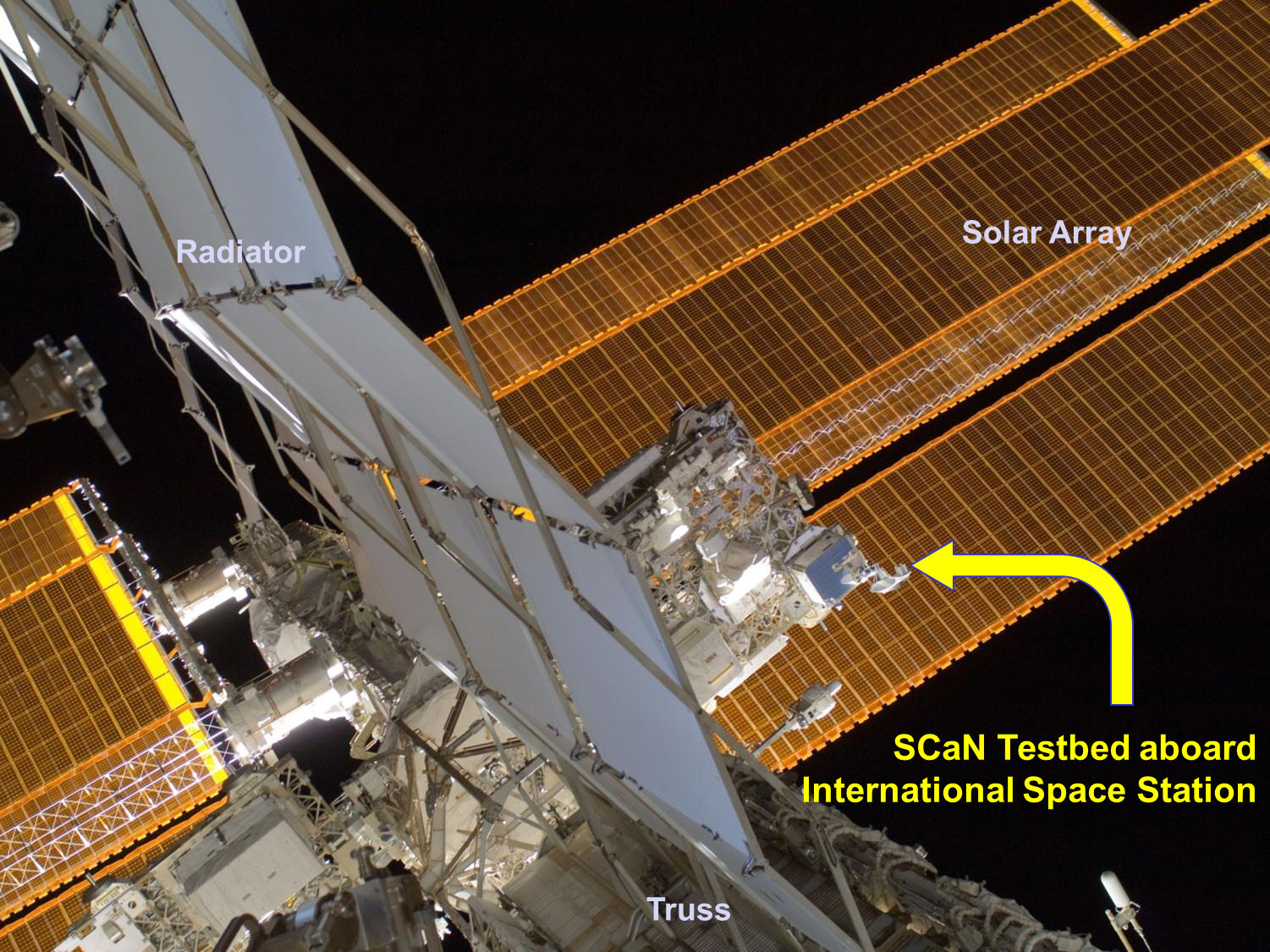NASA spacecraft typically rely on human-controlled radio systems to communicate with Earth. As collection of space data increases, NASA looks to cognitive radio, the infusion of artificial intelligence into space communications networks, to meet demand and increase efficiency.
“Modern space communications systems use complex software to support science and exploration missions,” said Janette C. Briones, principal investigator in the cognitive communication project at NASA’s Glenn Research Center in Cleveland, Ohio. “By applying artificial intelligence and machine learning, satellites control these systems seamlessly, making real-time decisions without awaiting instruction.”
To understand cognitive radio, it’s easiest to start with ground-based applications. In the U.S., the Federal Communications Commission (FCC) allocates portions of the electromagnetic spectrum used for communications to various users. For example, the FCC allocates spectrum to cell service, satellite radio, Bluetooth, Wi-Fi, etc. Imagine the spectrum divided into a limited number of taps connected to a water main.
What happens when no faucets are left? How could a device access the electromagnetic spectrum when all the taps are taken?

Software-defined radios like cognitive radio use artificial intelligence to employ underutilized portions of the electromagnetic spectrum without human intervention. These “white spaces” are currently unused, but already licensed, segments of the spectrum. The FCC permits a cognitive radio to use the frequency while unused by its primary user until the user becomes active again.
In terms of our metaphorical watering hole, cognitive radio draws on water that would otherwise be wasted. The cognitive radio can use many “faucets,” no matter the frequency of that “faucet.” When a licensed device stops using its frequency, cognitive radio draws from that customer’s “faucet” until the primary user needs it again. Cognitive radio switches from one white space to another, using electromagnetic spigots as they become available.
“The recent development of cognitive technologies is a new thrust in the architecture of communications systems,” said Briones. “We envision these technologies will make our communications networks more efficient and resilient for missions exploring the depths of space. By integrating artificial intelligence and cognitive radios into our networks, we will increase the efficiency, autonomy and reliability of space communications systems.”
For NASA, the space environment presents unique challenges that cognitive radio could mitigate. Space weather, electromagnetic radiation emitted by the sun and other celestial bodies, fills space with noise that can interrupt certain frequencies.
“Glenn Research Center is experimenting in creating cognitive radio applications capable of identifying and adapting to space weather,” said Rigoberto Roche, a NASA cognitive engine development lead at Glenn. “They would transmit outside the range of the interference or cancel distortions within the range using machine learning.”
In the future, a NASA cognitive radio could even learn to shut itself down temporarily to mitigate radiation damage during severe space weather events. Adaptive radio software could circumvent the harmful effects of space weather, increasing science and exploration data returns.
A cognitive radio network could also suggest alternate data paths to the ground. These processes could prioritize and route data through multiple paths simultaneously to avoid interference. The cognitive radio’s artificial intelligence could also allocate ground station downlinks just hours in advance, as opposed to weeks, leading to more efficient scheduling.
Additionally, cognitive radio may make communications network operations more efficient by decreasing the need for human intervention. An intelligent radio could adapt to new electromagnetic landscapes without human help and predict common operational settings for different environments, automating time-consuming processes previously handled by humans.
The Space Communications and Navigation (SCaN) Testbed aboard the International Space Station provides engineers and researchers with tools to test cognitive radio in the space environment. The testbed houses three software-defined radios in addition to a variety of antennas and apparatus that can be configured from the ground or other spacecraft.
“The testbed keeps us honest about the environment in orbit,” said Dave Chelmins, project manager for the SCaN Testbed and cognitive communications at Glenn. “While it can be simulated on the ground, there is an element of unpredictability to space. The testbed provides this environment, a setting that requires the resiliency of technology advancements like cognitive radio.”
Chelmins, Rioche and Briones are just a few of many NASA engineers adapting cognitive radio technologies to space. As with most terrestrial technologies, cognitive techniques can be more challenging to implement in space due to orbital mechanics, the electromagnetic environment and interactions with legacy instruments. In spite of these challenges, integrating machine learning into existing space communications infrastructure will increase the efficiency, autonomy and reliability of these systems.
The SCaN program office at NASA Headquarters in Washington provides strategic and programmatic oversight for communications infrastructure and development. Its research provides critical improvements in connectivity from spacecraft to ground.
For more information about SCaN, visit: www.nasa.gov/scan



























